Lenovo eServer BladeCenter HX5 Handleiding
Bekijk gratis de handleiding van Lenovo eServer BladeCenter HX5 (23 pagina’s), behorend tot de categorie Server. Deze gids werd als nuttig beoordeeld door 37 mensen en kreeg gemiddeld 4.6 sterren uit 19 reviews. Heb je een vraag over Lenovo eServer BladeCenter HX5 of wil je andere gebruikers van dit product iets vragen? Stel een vraag
Pagina 1/23

Optimized for virtualization and database applications with maximum
memory and compute capacity in a blade
Please see the Legal Information section for important notices and information. 1.
Product Guide
April 2011
IBM BladeCenter HX5
Product Overview
CONTENTS
Product Overview 1
Selling Features 2
Key Features 6
Key Options 15
HX5 Images 17
HX5 Specifications 20
The Bottom Line 21
Server Comparison 22
For More Information 23
Legal Information 23
Scalable 2-to-4-socket blade server optimized for virtualization/
consolidation, database, and ERP
Suggested uses: Front-end and mid-tier applications requiring high performance (CPU, memory
or I/O), enterprise-class availability, and extreme flexibility and power efficiency.
IBM® has been designing and implementing chipsets under the X-Architecture
® name since 2001.
eX5 technology represents the fifth generation of products based on the same design principle
IBM began with in 1997: to offer Intel
® Xeon® processor-based systems that are expandable,
offer “big iron” reliability, availability, and serviceability (RAS) features, with extremely competitive
price/performance.
The eX5 technology is primarily designed around three major workloads: database servers,
server consolidation using virtualization services, and Enterprise Resource Planning (application
and database) servers.
If you’re using industry-standard servers to run business critical applications, the systems that run
these applications need the type of technology designed into IBM’s eX5 technology systems. The
eX5 chipset represents a $100M+ investment in designing a flagship offering that can harness
the power of 4-socket-and-up 64-bit x86 (x64) Xeon processors. The eX5 family includes a
scalable performance with the ability to scale from a (30mm) to blade server single-wide blade
a (60mm). double-wide blade
Maybe you’d like to start out with a 2-socket blade and possibly add sockets later, if your needs
change. Or perhaps you need more than a 2-socket blade, but don’t want to get locked into a
monolithic 4-socket blade—again, in case your requirements change. With IBM, you can start at
2 sockets and grow to 4 if needed. And if you require a variety of 2- and 4-socket servers in your
data center, you only have to qualify one server for all these workloads. This can save much time
and effort and speed deployment. You can also save money on software licensing by virtualizing
a 4-processor server into many VMs, rather than using multiple 2-processor servers. Huge
amounts of memory also enable more or larger VMs, and larger databases (especially databases
stored entirely in memory).
Reducing an entire server into a little over of rack space (i.e., up to 14 servers in 9U) does .5U
not mean trading away features and capabilities for smaller size. The IBM BladeCenter
® HX5
blade server offers features comparable to many 1U rack-optimized full-featured servers, and
then some: The HX5 supports up to of the latest high-performance , two 10-core, 8-core, 6-core
or Intel Xeon family or / series processors. The Xeon processors are 4-core E7 7500 6500
designed with up to of shared cache and leading-edge memory performance (up to30MB
1066MHz) to help provide the computing power you require to match your business needs and
growth. The new Xeon and series processors offer up to E7-4800 E7-2800 40% greater
performance than the previous-generation Intel 7500/6500 series processors.
Because business requirements change and a 2-socket server that meets those needs today
may not meet them in the future, the HX5 was designed to be upgradeable to meet the diverse
needs of multiple workloads. For , it can be configured as a 2-compute-intensive workloads
wide blade server with up to , 4 processors / 40 cores 32 DIMMs 512GB 4 PCIe cards 16 I/O ( ), ,
ports 4 solid-state drives SSDs memory-intensive workloads, and ( ). Conversely, for , the
HX5 can be configured as a 2-wide server consisting of and memory 1 blade server 1 MAX5
expansion blade, with up to 40 DIMMs 640GB FlexNode partitioning ( ) total. IBM allows a
physical 4-socket configuration to be remotely reconfigured by software into logical 2-socket two
servers, as needs change or for daily peak and off-peak workloads.
The HX5 supports (formerly ESXi) preloaded on a standard USB VMware vSphere Hypervisor
flash drive. It operates in a diskless configuration, offers a smaller memory footprint, extremely
high performance, and stronger security, making getting a system up and running in a virtualized
environment faster and easier than ever before. You can save money on software licensing by
using the huge memory capacity to virtualize the server into many VMs, rather than using
multiple servers. Huge amounts of memory also enable larger VMs and larger databases.
IBM’s eX5 technology-based systems are the ideal solution for scale-up database-serving
®

Optimized for virtualization and database applications with maximum
memory and compute capacity in a blade
Please see the Legal Information section for important notices and information. 2.
applications on Microsoft® Windows® with Microsoft SQL Server® or IBM DB2®, as well as Linux®
with Oracle or DB2. Database hosting demands ultimate server reliability features, and once
installed, they tend to grow and grow, requiring ever greater levels of availability. eX5 servers
provide exactly that degree to availability.
Another strong application area for the eX5-based systems is enterprise server consolidation
activities workloads, including SAP and Oracle. eX5 systems can offer considerable savings over
UNIX deployments, using our certified solution stacks on either Windows or Linux.. Larger
servers need more processor, memory and I/O resources, which make maximum use of any
applicable virtual machine software licensing fees and deliver superior system utilization levels.
The name of the game in consolidation activities is to deploy the fewest new servers possible and
help IT staff manage more images with the same or fewer overall people.
The HX5 uses industry-standard DDR3 Chipkillmemory with ™ (Error Checking and ECC
Correcting) protection—for high performance and reliability. For even higher levels of availability,
the eX5 servers also offer Memory ProteXion™, , , memory scrubbing memory rank sparing
and selectable memory mirroring.
An integrated dual-port Gigabit Ethernet
1 controller is standard, providing high-speed data
transfers and offering (TCP Offload Engine) support, and TOE load-balancing failover
capabilities. Via optional expansion cards, each blade can also connect to additional Ethernet,
10Gb Ethernet SAS, , Fibre Channel iSCSI, InfiniBand,™, and other high-speed communication
switches housed in the chassis. This blade is designed with power management capability to
provide the maximum uptime possible for your systems. In extended thermal conditions or power
brownouts, rather than shut down completely, or fail, the HX5 automatically reduces the
processor frequency to maintain acceptable thermal and power levels.
All HX5 models offer impressive features at an equally impressive price, including up to two 1.8-
inch fixed solid-state drives (SSDs) with support, and one optional RAID-0/1 internal USB
flash drive (for embedded hypervisor]. Additional direct-attach storage is available via the
BladeCenter S chassis. Moreover, the HX5 is for diskless operation, offering each optimized
blade server access to essentially unlimited external storage capacity via Fibre Channel, SAS, or
iSCSI.
A single chassis supports up to 30mm-wide HX5 blades in BladeCenter H 14 hot-swappable
only (BladeCenter H) of rack space, or up to in the high-speed 9U 12 12U BladeCenter HT
telecommunications chassis. In addition to the blade servers, these chassis also hold up to 10
(BladeCenter H) or 8 switches/bridges (BladeCenter HT) internally. The , BladeCenter S
designed for SMB and mid-market customers, takes integration and affordability to a new level,
combining up to hot-swap 12 SAS/SATA 6 blade HDDs (with optional SAS card) and up to
servers 4 switches and . Not only can this save significant data center space (and therefore the
cost of floor space and rack hardware) compared to 1U servers, it also consolidates
switches/bridges and cables for reduced complexity and lower cabling costs, and it allows clients
to manage everything in the solution as one. Using a BladeCenter H chassis, up to HX5 56
servers ( processors/ cores) can be installed in one rack; but the 112 896 industry-standard 42U
value of BladeCenter extends far beyond high density data center environments.
The various BladeCenter chassis are designed to monitor environmental conditions in the
chassis and each blade and send alerts to the administrator Advanced standard features, such .
as , Active Memory Predictive Failure Analysis, light path diagnostics hot-swap redundant ,
SSDs HDDs power supplies blower modules Calibrated Vectored Coolingand , and with ™;
IPMI 2.0 highly secure remote power control text-console redirect over support, including ;
LAN, next-generation BIOS ( ), an (upgradeable with a UEFI Advanced Management Module
redundant AMM), management software including IBM Systems Director IBM Systems
Director Active Energy Manager™ Remote Deployment Manager. and IBM ServerGuide
™
help maintain system availability with increased uptime.
If you need scalable, highly manageable, high-performance virtualization in a space- or power-
constrained environment, the HX5 is the ideal system.
Selling Features
Price/Performance
• There is an HX5 model to fit all budgets. The HX5 offers a choice of high-performance 4-, 6-, 8-, and
10-core Xeon processors with dual integrated memory controllers, clock rates of 1.86GHz to
2.67GHz, 12MB to 30MB of integrated Level 3 cache, and Intel Virtualization Technology (VT) ,
Hyper-Threading (HT) technology, and Turbo Boost technology.. Xeon E7 processors offer up to
40% better performance than 7500/6500 series processors, and 7500/6500 series processors offer
up to 3X better performance2 than the previous-generation 7400 series processors and up to 10X
better performance than the single-core processors of a few years ago that you may still be using.
• Up to 256GB of registered DDR3 ECC memory per blade operates at 800MHz to 1066MHz
1 Actual data transfer speed will vary and is often less than the maximum possible. Gigabit Ethernet transfer speed requires support on both
system and server, and appropriate network infrastructure.
2 Based on Intel measurements.

Optimized for virtualization and database applications with maximum
memory and compute capacity in a blade
Please see the Legal Information section for important notices and information. 3.
(depending on the system configuration), for high performance and wide memory bandwidth.
• The 7873 machine type supports low-voltage 1.35V DIMMs.
• By scaling to 2 blade servers, the HX5 can support up to 512GB of memory—enough for even the
most demanding virtualization, database, or ERP needs. If even that’s not enough memory, using
one blade server and one memory expansion blades, the HX5 can scale to 640GB.
• Alternatively, with 40 DIMM slots the server and MAX5 can be populated with inexpensive 2GB
DIMMs (for 80GB), while gaining the performance boost from using 8 memory controllers (4 in the
server and four more in the MAX5 unit).
• Embedded virtualization (optional on all models) offers extremely high performance, enhanced
security, and a zero-gigabyte HDD footprint. (In other words, no mechanical HDD to fail.)
• Solid state drives (SDDs) use only 2W of energy per drive, vs. 9-10W for 2.5-inch HDDs. This is as
much as 80% less energy than a HDD would use (with a corresponding reduction in heat output).
• The extremely high degree of integration in the various BladeCenter chassis reduces the need for
server components, replacing numerous fans, KVM and Ethernet cables, power supplies, external
switches and other components with fewer shared hot-swap/redundant components in the
BladeCenter chassis itself. This integration also can greatly reduce the amount of power consumed
and heat produced, relative to an equivalent number of 1U servers. This can significantly reduce a
data center power bill. The reduced data center footprint can also save on infrastructure cost.
• The midplanes used in all chassis provide high-speed blade-to-blade, blade-to-switch-module and
module-to-module communications internally as well as externally. The midplanes used in the
BladeCenter H and BladeCenter HT chassis provide four 10Gb data channels to each blade, and
supports high-speed switch modules, including 4X InfiniBand and 10Gb Ethernet.
• The various BladeCenter chassis use ultrahigh efficiency power supplies. Most industry-standard
servers use power supplies that are between 70-75% efficient at converting power from AC wall
current to the DC power used inside servers. BladeCenter power modules are up to 92% efficient.
This helps save even more money, as more of the power input you are paying for is used for
processing, rather than released into the data center as waste heat that requires even more energy to
cool.
• BladeCenter design also reduces the number of parts required to run the system. Sharing fans,
systems management, and optical media means fewer parts to buy and maintain, and fewer items
that can fail and bring the overall solution down.
Flexibility
The has the ability to grow with your application requirements, thanks to: HX5
• The ability to grow from a single-wide 2-socket server blade to a double-wide 4-socket server
configuration, optimized for compute-intensive workloads with up to 4 processors/40 cores, 512GB
of memory, 4 PCIe cards, 16 I/O ports, and 4 SSDs) in two server blades; or for memory-intensive
workloads with one server blade and one MAX5 memory expansion blade (2 processors/20 cores,
640GB of memory, 4 PCIe cards, 16 I/O ports, and 4 SSDs).
• A choice of processor speeds (1.73 to 2.0GHz), and shared L3 cache sizes (12MB, 18MB, 24MB, or
30MB).
• Up to two internal hot-swap 1.8-inch solid state drives, and access to terabytes of external storage
via the BladeCenter S chassis or IBM System Storage
® SAN and NAS storage devices. SSDs
consume only 10-20% of the energy required by 2.5-inch HDDs.
• Two Gigabit Ethernet ports standard, plus optional 2-port or 4-port expansion cards or a
BladeCenter PCI Express I/O Expansion Unit 3. One HX5 model includes a 10Gb expansion card
(optional in the other models).
In addition, the various BladeCenter chassis offer a high degree of flexibility:
• They support configurations that are 30mm or 60mm wide, with a variety of I/O options, depending
on need.
• When installed in a BladeCenter H high-speed switch bay, the optional Multi-Switch Interconnect
Module doubles the number of Gigabit Ethernet and Fibre Channel connections to every blade in
the chassis (up to 8 or 12 ports, depending on the blade server).
• Xeon processor-based HX5 blades can be used in the same chassis as Intel processor-based HC10,
HS12, HS20, HS21, HS21 XM, HS22, HS22V, and HS40 blades; AMD Opteron processor-based
LS20, LS21, LS22, LS41 and LS42 blades; IBM PowerPC® processor-based JS20, JS21, and JS22
blades; POWER6® processor-based JS12, JS23, and JS43 Express blades; POWER7®
processor-
based PS700, PS701, and PS702 blades; Cell Broadband Engine™ processor-based QS21; and
IBM PowerXCell™ processor-based QS22 blades. Depending on the blade servers used, the
various BladeCenter chassis support Microsoft Windows, Linux, Novell Netware, IBM AIX
® and
Sun Solaris 10 operating systems in the same chassis.
• Most HS/LS/JS/QS blade servers ever released by IBM are supported in every BladeCenter chassis
Product specificaties
| Merk: | Lenovo |
| Categorie: | Server |
| Model: | eServer BladeCenter HX5 |
| Gewicht: | 5440 g |
| Breedte: | 29 mm |
| Diepte: | 446 mm |
| Hoogte: | 245 mm |
| Frequentie van processor: | 2.13 GHz |
| Processorfamilie: | Intel® Xeon® E7 familie |
| Processormodel: | E7-4830 |
| Aantal processorkernen: | 8 |
| Grafische adapter: | G200eV |
| Inclusief besturingssysteem: | Nee |
| Ethernet LAN: | Ja |
| Processor lithografie: | 32 nm |
| Aantal USB 2.0-poorten: | 1 |
| Aantal Ethernet LAN (RJ-45)-poorten: | 2 |
| Netvoeding: | 105 W |
| Intern geheugen: | 64 GB |
| Intern geheugentype: | DDR3-SDRAM |
| Duurzaamheidscertificaten: | ENERGY STAR |
| Voldoet aan industriestandaarden: | IEEE 802.3, IEEE 802.3u, IEEE 802.3ab |
| Soort voeding: | AC/DC |
| Intel® Wireless Display (Intel® WiDi): | Nee |
| Processor socket: | LGA 1567 (Socket LS) |
| Stepping: | A2 |
| Systeembus: | 6.4 GT/s |
| Processor aantal threads: | 16 |
| Processor operating modes: | 64-bit |
| Processor cache: | 24 MB |
| Bus type: | QPI |
| Thermal Design Power (TDP): | 105 W |
| Codenaam processor: | Westmere EX |
| Processor cache type: | Smart Cache |
| ECC ondersteund door processor: | Ja |
| Processorfabrikant: | Intel |
| Maximum intern geheugen: | 256 GB |
| Totale opslagcapaciteit: | 0 GB |
| Soort optische drive: | Nee |
| Ondersteunde instructie sets: | SSE4.1, SSE4.2 |
| Intel® My WiFi Technology (Intel® MWT): | Nee |
| Intel® Hyper Threading Technology (Intel® HT Technology): | Ja |
| Intel® Turbo Boost Technology: | 1.0 |
| Intel® Quick Sync Video Technology: | Nee |
| Intel® InTru™ 3D Technology: | Nee |
| Intel® Clear Video HD Technology (Intel® CVT HD): | Nee |
| Intel® Insider™: | Nee |
| Intel® Flex Memory Access: | Nee |
| Intel® AES New Instructions (Intel® AES-NI): | Ja |
| Enhanced Intel SpeedStep Technology: | Ja |
| Execute Disable Bit: | Ja |
| Thermal Monitoring Technologies: | Ja |
| CPU configuratie (max): | 4 |
| Intel® Enhanced Halt State: | Nee |
| Intel® Clear Video Technology for Mobile Internet Devices (Intel® CVT for MID): | Nee |
| Intel® VT-x with Extended Page Tables (EPT): | Ja |
| Ingebouwde opties beschikbaar: | Nee |
| Intel® 64: | Ja |
| Intel® Virtualization Technology for Directed I/O (VT-d): | Ja |
| Intel® Clear Video-technologie: | Nee |
| Intel® Virtualization Technology (VT-x): | Ja |
| Verpakkingsgrootte processor: | 49.17 x 56.47 mm |
| Conflictvrije processor: | Nee |
| ARK ID processor: | 53676 |
| Intel® Trusted Execution Technology: | Ja |
| Compatibele besturingssystemen: | Windows Server 2008, 2008 R2 (Standard/Web/Enterprise/Datacenter Editions) 32/64-bit\nWindows HPC Server 2008 64-bit\nRHEL 6 64-bit\nRHEL 5.3 64-bit\nSLES 11 64-bit\nSLES 10 64-bit\nVMware ESX, ESXi, vSphere Hypervisor 4.0 |
| Intel® Anti-Theft Technology (Intel® AT): | Nee |
| Netwerkfuncties: | Gigabit Ethernet |
| Maximale turbofrequentie van processor: | 2.4 GHz |
| Processorcode: | SLC3Q |
| Type behuizing: | Lemmet |
| Aantal voedingen: | 1 |
| Redundante voeding: | Nee |
| Maximaal intern geheugen ondersteund door processor: | 2048 GB |
| Geheugentypen ondersteund door processor: | DDR3-SDRAM |
| Klokgeheugen-snelheden ondersteund door processor: | 800,978,1066,1333 MHz |
| ECC: | Ja |
| Kloksnelheid geheugen: | 1333 MHz |
| Geheugenlayout: | 8 x 8 GB |
| Geheugenslots: | 16x DIMM |
| Aantal geïnstalleerde processoren: | 2 |
| Chipset moederbord: | Intel® 7500 |
| Schaalbaarheid: | S4S |
| HDD interface: | SATA |
| CPU multiplier (bus/core ratio): | 16 |
| FSB Parity: | Nee |
| Front-side bus processor: | - MHz |
| Tcase: | 64 °C |
| Intel® Demand Based Switching: | Nee |
| Geheugenkanalen ondersteund door processor: | Quad |
| Processorserie: | Intel Xeon E7-4800 |
| Grafische adapter-familie: | Matrox |
| Intel® Dual Display Capable Technology: | Nee |
| Intel® FDI Technology: | Nee |
| Intel® Rapid Storage Technology: | Nee |
| Intel® Fast Memory Access: | Nee |
| RAID support: | Ja |
| HDD omvang: | 1.8 " |
| Maximum aantal HDD's per behuizing: | 2 |
| Maximale opslagcapaciteit: | 0.4 TB |
| LAN controller: | Broadcom BCM5709S |
| Maximum geheugen grafische adapter: | 16 MB |
| Grafische adapter, soort geheugen: | GDDR2 |
| Wake-on-LAN: | Ja |
| Max. aantal SMP-processoren: | 2 |
| Afbeeldingentypetoewijzing: | <div><img src="https://ark.intel.com/inc/images/diagrams/diagram-17.gif" title="Block Diagram" /></div> |
| Hot-swap: | Nee |
Heb je hulp nodig?
Als je hulp nodig hebt met Lenovo eServer BladeCenter HX5 stel dan hieronder een vraag en andere gebruikers zullen je antwoorden
Handleiding Server Lenovo

19 Juni 2023

13 Juni 2023

11 Juni 2023

28 Mei 2023

11 Mei 2023

9 Mei 2023

4 Mei 2023

4 Mei 2023

29 April 2023

29 April 2023
Handleiding Server
- Intel
- KanexPro
- Fantec
- Trendnet
- SilverStone
- Acti
- HP
- Revox
- Dual Bay
- Axis
- QNAP
- Atlantis Land
- Blackmagic Design
- MSI
- SEH
Nieuwste handleidingen voor Server
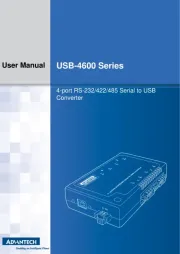
30 Juli 2025
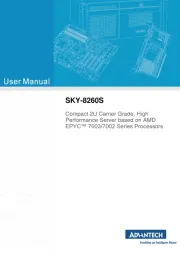
30 Juli 2025
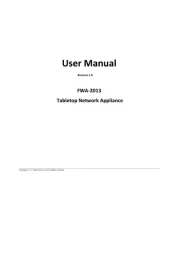
29 Juli 2025
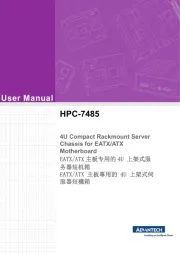
29 Juli 2025
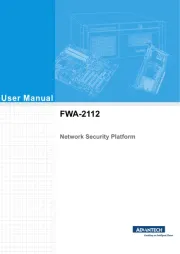
29 Juli 2025
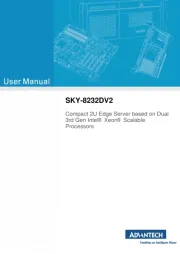
29 Juli 2025
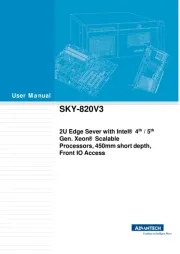
29 Juli 2025
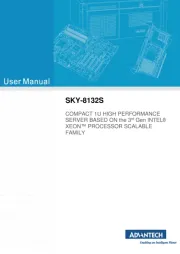
29 Juli 2025
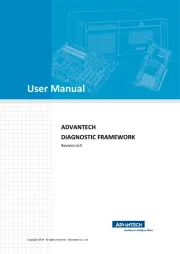
29 Juli 2025
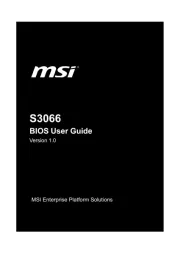
29 Juli 2025